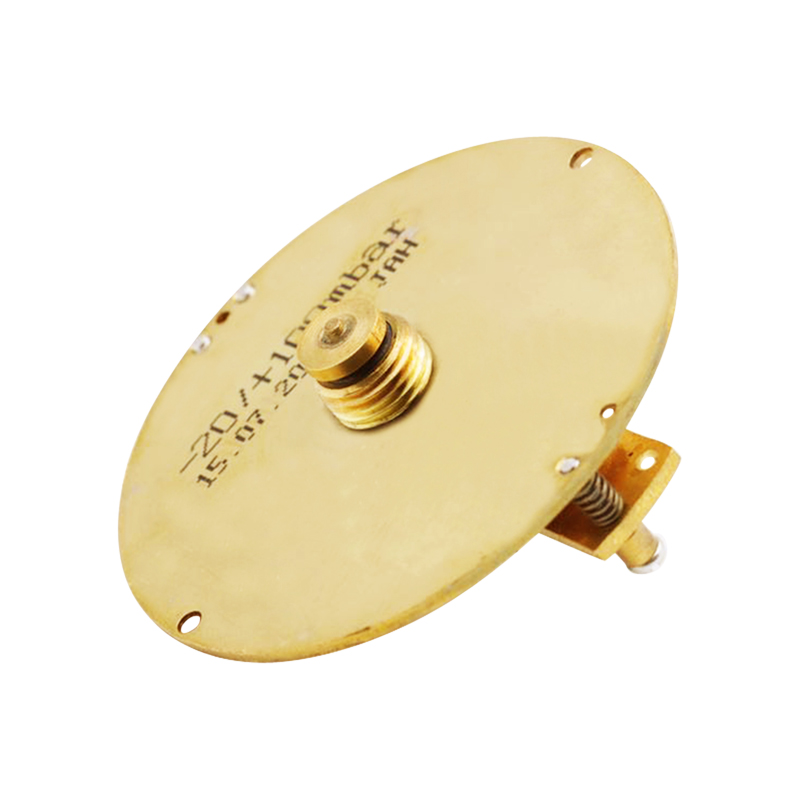
Nov . 12, 2024 00:44 Back to list
parts of diaphragm pressure gauge jah
Understanding the Components of a Diaphragm Pressure Gauge
Diaphragm pressure gauges are essential instruments widely used in various industries for measuring pressure. These gauges utilize a flexible diaphragm as the primary sensing element, providing reliable and accurate readings across different applications. Understanding the components of a diaphragm pressure gauge is crucial for both users and manufacturers to ensure optimal performance and longevity of the instrument.
1. Diaphragm
At the heart of the diaphragm pressure gauge is the diaphragm itself. Typically made from materials such as stainless steel, copper, or elastomers, the diaphragm responds to pressure variations. When pressure is applied, the diaphragm flexes, converting pressure changes into mechanical movement. This movement is then transmitted to an indicator that displays the pressure reading. The choice of diaphragm material is significant, as it must withstand the process medium, temperature fluctuations, and corrosive environments while maintaining elasticity.
2. Housing
The housing of the diaphragm pressure gauge serves multiple purposes it protects the internal components, maintains the gauge's integrity, and often contributes to the gauge's overall aesthetics. The housing is typically constructed from robust materials like stainless steel or aluminum to ensure durability, especially in harsh environments. Furthermore, the design of the housing can facilitate easy mounting and integration into various systems, whether in industrial settings or laboratory applications.
3. Connection Points
Diaphragm pressure gauges feature connection points designed to interface with the process system. These connections can be threaded openings, flanges, or sanitary fittings, depending on the application requirements. The type of connection ensures a secure and leak-free attachment to pipes, tanks, or other pressure vessels, allowing accurate pressure readings without contamination or interference from the surrounding environment.
4. Indicator Mechanism
parts of diaphragm pressure gauge jah

The indicator mechanism is responsible for visually displaying the pressure measurement. It typically consists of a pointer that moves along a calibrated scale, marking the pressure level. Many modern diaphragm pressure gauges utilize analog indicators, while digital versions are also available. Digital gauges come equipped with enhanced features, such as backlighting, data logging, and connectivity options for real-time monitoring. Regardless of the type, the indicator mechanism should be designed for clarity and ease of reading under various lighting conditions.
5. Calibration
Calibration is an essential aspect of any pressure gauge, including diaphragm types. Calibration ensures the gauge provides accurate and reliable measurements. Manufacturers establish processes for calibrating their gauges using precision reference devices. Regular calibration checks are recommended to maintain the accuracy of the gauge, especially in critical applications where pressure deviations can lead to performance issues or safety hazards.
6. Damping Mechanism
In applications with fluctuating pressure, a damping mechanism may be employed to reduce needle bounce and provide smoother readings. Damping fluids, such as glycerin or silicone oil, are often used in the casing of the gauge to stabilize the indicator's response to rapid pressure changes. This feature is highly beneficial in environments where pressure spikes are common, preventing erroneous readings and enhancing gauge stability.
7. Applications and Industries
Diaphragm pressure gauges find applications in various industries, including oil and gas, water treatment, pharmaceuticals, and food processing. Their versatility makes them suitable for measuring the pressure of gases, liquids, and vapors in different temperature and pressure conditions. Understanding the specific requirements of the application is vital for selecting the appropriate gauge model.
Conclusion
Diaphragm pressure gauges are invaluable tools in monitoring and managing pressure within various systems. By understanding the components such as the diaphragm, housing, connection points, indicator mechanism, calibration, and damping mechanism, users can appreciate the sophistication and reliability of these instruments. As technology advances, diaphragm pressure gauges continue to evolve, providing enhanced features and capabilities that meet the growing demands of diverse industrial applications. Whether you are a technician, engineer, or quality control specialist, having a deep understanding of these gauges can ensure their effective and precise operation in your processes.
-
High-Precision 5 Valve Manifold Differential Pressure Gauge Suppliers
NewsApr.29,2025
-
High-Precision Diaphragm Vacuum Pressure Gauges Manufacturers & Quotes
NewsApr.29,2025
-
Omega Differential Pressure Gauges High Accuracy & Durability
NewsApr.28,2025
-
Low Pressure Differential Pressure Gauges Precision Solutions & Quotes
NewsApr.28,2025
-
Digital Diaphragm Pressure Gaauge Precision Measurement & OEM Quotes
NewsApr.28,2025
-
Differential Pressure Gauge China Price High-Accuracy & Best Quotes
NewsApr.28,2025
